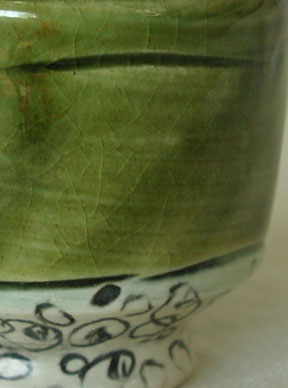love a good mystery
Saturday, September 12th was the second day of a two day glaze application workshop I was conducting at a local community college. The first day was held two weeks previous. For the most part, this was intended to be a quick application refresher for students who felt a little stuck in a rut; a vehicle to step out of old habits. One sign that your students are stuck in a rut: the zombie-like gaze when in close proximity to the studio glaze area; holding tight to their bisque ware only to thoughtlessly baptize the piece in the closest bucket of blue glaze. Yeah…stuck. This workshop included a mixture of experienced and intermediate students looking for motivation or inspiration to begin to see the glaze process as part of the design process.
The second day our intent was to look at student work as they applied what they had learned two weeks before. However, our “design meets glaze application” quickly deconstructed. The design process was halted by recent glaze mysteries.
The mystery was two-fold. First, the tried and true glaze that suddenly gave unreliable results. Assuming the firing process is consistent – as consistent as firing can be – usually the mystery is finding out which raw material is contaminated. Or, discovering that one of your ingredients is newly supplied by a different manufacturer or being mined in a new location. Some mysteries are solved while others we live with.
The second mystery concerned a ^9-10 rutile blue glaze that blistered. Not always. But, often enough to dedicate a good deal of creative energy to the shard heap. As mysteries go, some are true mysteries, like the ones you live with. This one just qualified as fussy.
Students said this glaze worked 50% of the time. Really? Why continue? I assured them that they could create a new, more reliable glaze of similar character (minus the blisters, of course) in less time than it would take to do the detective work to ‘fix’ this one. Yes…but the fussy glazes are always so alluring. It does seem to work that way. After suggesting the abandonment of this glaze, I was met with resolute expressions; persuading me to follow-up with a few options to begin their detective work. Fussy glaze.

Just as the students were instructed, I also ran a few tests. One transparent glaze. Two glazes that broke with the surface texture and one that should have mimicked the surface with it’s fluid nature. The transparent test was by far the most successful in conjunction with the intent…the design of the piece. From here I’ll develop a color palette with this glaze and while I’m at it I’ll address the crazing…more fussing over a fussy glaze.